Steel is a robust metal, printed in steel powder and infused with bronze. The material is very strong and allows the creation of large objects. Steel is available in a variety of polished and unpolished finishes.
Design Specifications
- 200 x 350 x 200 mm (unpolished, unpolished black)
- 152 x 152 x 152 mm (polished, polished black, polished brown)
Pricing Info
The pricing for Steel is based on:
- Model volume: The volume of your model is used to calculate the material cost (mm³)
- Density: The ratio of the box surrounding your model to the model volume will influence the price, and will allow e.g. price corrections in designs with a low model volume and a large surrounding box (% mm³/mm³)
For Steel, we charge a minimum price per ordered piece. Unlike the startup cost (which is applied to most materials), this cost vanishes when the price is higher than the minimum price.
Typical Use
Steel is typically used for non-functional parts such as decorative models, trophies, board game pieces or jewelry.
Technology

With Steel 3D Printing, your part is created by binding together layers of steel powder. After a layer of steel powder is spread across the base of a “build box”, a special print head moves back and forth over the layer, and deposits binding agent at specific points, as directed by a computer and your design file. Once the layer is finished and it has been dried with powerful overhead heaters, a new layer of powder is spread, and the process begins again. In this way, layer by layer, from the bottom up, your part is created.

Once the printing is done, the build box is placed in a curing oven and your part is sintered. The extra powder that was not bound, and is not part of your design, is then removed. At this point, your part is still very fragile. This so-called “green state” will be the base of some of the design rules and limitations that follow below. Finally, via the use of a flute system, your design is infused with bronze, which replaces the binding agent. Your part is now solid metal, and after the flutes are manually removed, it is tumbled and polished to produce a smooth finish.
Additional Information
- Due to the nature of the process used in the production of steel, interlocking or enclosed parts are not possible
- There is a large chance that your steel model will be ferromagnetic but due to the variable ratio of the bronze infiltrant, it cannot be guaranteed
- TIG (tungsten inert gas) welding with silicon bronze filler can be used to weld 3D-printed steel parts together. If a strong bond isn’t required, you can also silver solder steel parts together with a torch. This is typically done for smaller models. Additionally, using solder will require flux or a flux paint to make sure the parts bond
- As the production of your steel model involves a thermal step, shrinkage is something you should take into account. We advise you to scale up the desired design by 2% for designs where X, Y or Z is below 70 mm and 3% for models which are larger. This larger scale will compensate for the shrinkage and as a result, the dimensional accuracy will be ±1%. This is an indication but it cannot be guaranteed
- Models made of steel are printed in 420 stainless steel and infused with bronze. The chemical composition of the final 3D-printed product will be approximately 60% steel and 40% bronze (Cu 90%/Sn 10%)
- The printing orientation for steel can be different each time and can result in various surface results
- The way the bronze is infused can vary and cause color variations in your model and between different models
- The bronze infiltration process also requires the addition of sprues that are broken off and polished away after the infusion. This can create small, round marks on the final product that appear smoother and more polished than the rest of the product
- Steel is the cheapest form of metal printing but you will get variations in smoothness and color
Learning about our materials is one thing, seeing and touching them another. That's why we've designed sample kits based on our Periodic Table of Materials.
Basic Sample Kit
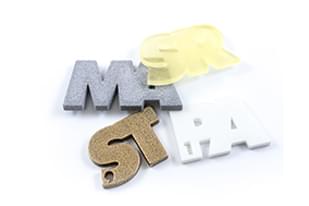
Includes a sample of polyamide, alumide, standard resin and steel (natural polished).
Steel Natural Unpolished
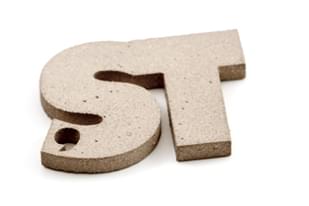
Includes a natural unpolished Steel sample.
Steel Unpolished Black

Includes an unpolished black Steel sample.
Steel Natural Polished
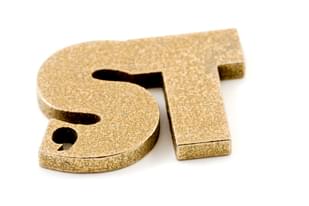
Includes a natural polished Steel sample.
Steel Polished Black
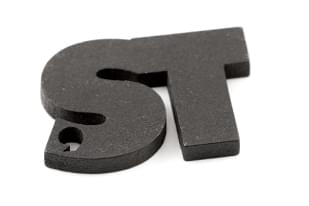
Includes a polished black Steel sample.
Steel Polished Brown
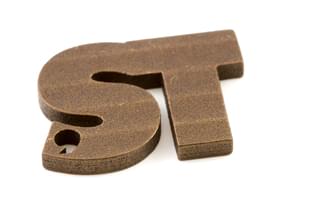
Includes a polished brown Steel sample.
Steel Sample Kit Various
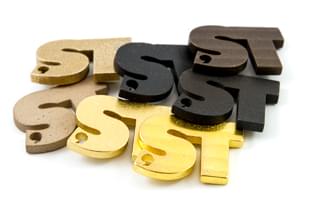
Includes all Steel samples.
Additional Materials
We want you to have access to as many 3D printing materials as possible, so you can make the best choice for your project. If you didn’t really find what you were looking for on i.materialise, you might want to take a look at Materialise OnSite. OnSite is our other online platform, mainly used by professionals who need rapid prototyping and manufacturing in an industrial environment.
This means you can additionally find these materials on OnSite:
- Stainless Steel (316L or 1.4404) : 316L, a low-carbon alloy of stainless steel also known as 1.4404, is a highly corrosion-resistant material and offers excellent strength. This 3D-printed stainless steel is produced via Select Laser Melting (SLM) and has high ductility and good thermal properties. It can be used for food-safe applications, machine components and production tools.








